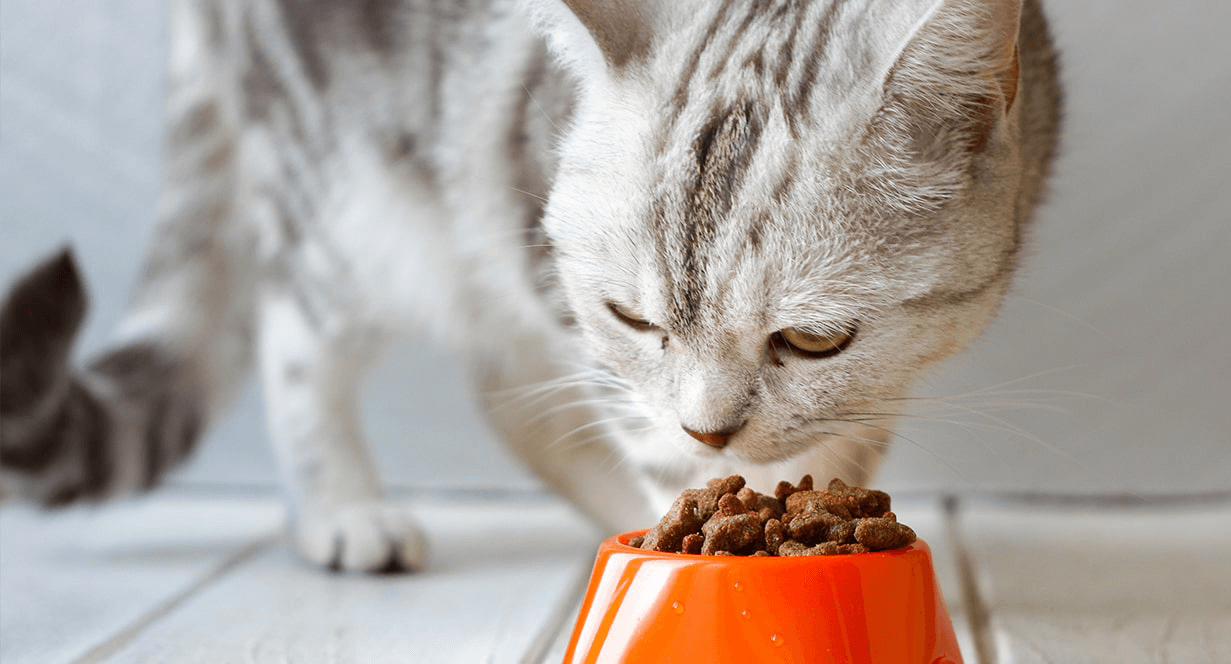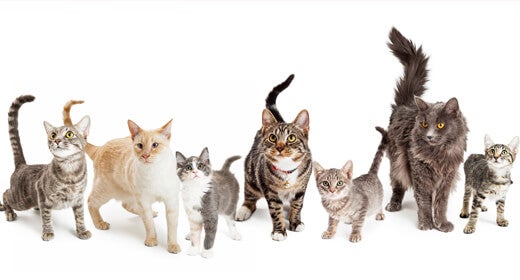

Your cat is one of a kind, so it stands to reason that you want to choose a cat food that accounts for their unique tastes, age, breed and health concerns. But with thousands of pet foods available, how do you pick the one that’s right for your cat?
First, it’s important to understand your cat’s nutritional needs. Then, you’ll need to think about your cat’s life stage, lifestyle and any health issues, and do a bit of research on cat food types, ingredients and cost. That may sound complicated, but we’ll make it easy for you — just keep reading.
Good nutrition is as important to your cat as it is to you — but their nutritional needs are quite different! Unlike humans, a cat needs a high-fat diet with less fiber. And even if you prefer a vegetarian diet, keep in mind that cats are carnivores. They need nutrients from animal protein and fat for optimal health, and they benefit from fiber for a healthy digestive tract and carbohydrates for energy.
Kittens, adult cats, nursing mothers and mature or senior cats are all examples of life stages, and each has different nutritional requirements. All cat foods should state which life stage they are recommended for — as an example, IAMS™ Proactive Health™ Mother and Kitten as well as IAMS™ Proactive Health™ Healthy Adult include the intended life stage right on the package.
Nutritional needs also vary depending on your cat’s lifestyle. A cat whose primary activity is guarding the couch doesn’t need as much energy as one who enjoys roaming outside.
.
Because cats need the nutrients found in animal sources, it’s best to pick a food in which a primary ingredient (one of the first ones listed) is an animal-based protein source such as chicken, lamb, fish, egg or one of their by-products. These ingredients contain all the essential amino acids your cat needs, including taurine, which isn’t found in a plant-based protein source. Foods that include a combination of carbohydrates in your cat’s diet, such as corn meal or barley and grain sorghum, ensure efficient absorption of nutrients and help maintain energy levels. And beet pulp is an excellent fiber source that promotes a healthy digestive tract.
For a soft, thick coat and healthy skin, your pet needs fatty acids like those found in vitamin-rich fish oils and quality fat sources such as chicken.
Cat food labels provide limited information on the nutritional value of your pet’s food because labeling regulations do not allow manufacturers to describe the quality of ingredients on the package. A reputable pet food manufacturer can explain how they evaluate and ensure the quality of their products.
When choosing cat food, the saying “You get what you pay for” definitely applies. A low price may indicate cheap ingredients or ingredients that change as manufacturer costs fluctuate. So while price is an important factor, it shouldn’t be the only one you consider.
Plus, many lower-priced products recommend higher daily portions to provide the same amount of nutrition found in a high-quality diet. To get a better idea of cost, it is the cost per feeding, not the total cost, that counts.
To figure out the cost per feeding for a cat food, divide the total cost by the number of days the product lasts. When compared closely, high-quality pet foods tend to come out on top, from both a nutritional and a cost standpoint.


Your adult cat is a perfect specimen of mobility, speed, acuity, and grace. She is in her prime. She shines in her gleaming coat and her eyes are bright.
Jumping, twisting, and landing, her skeleton bears strain our own bodies could never endure. Her muscles are highly flexible. Her movements are lightning fast and her senses highly tuned.
Between ages 1 and 8, your cat will experience the equivalent of a human's journey from teenager to late middle age. As caretaker, you are responsible for good adult cat health and lifestyle in these years and beyond.
It can be difficult to keep such an adventurous creature indoors. But to do so is proven to extend a cat's life, because it limits exposure to predators, cars, fleas, and other cats that may have diseases such as feline leukemia or feline immunodeficiency virus (FIV). Keep your cat duly entertained indoors by providing toys, structures to climb on, spots near windows to watch the action outdoors, or–if she responds to them–TV and special videos.
One potential side effect of being a pampered, indoor cat is obesity. If your cat starts to gain weight, limit or change her diet and encourage more exercise. Make time for play with your cat each day.
An adult cat should visit the vet annually. Dental and gum disease, diabetes, hyperthyroidism, and other medical problems can present themselves in adulthood to middle age. Early detection is essential to successful treatment and extended life.
As your cat nears 8 years old, be sure to watch for signs of other age-related illnesses such as weight loss, decreased appetite, neglect of grooming, increased thirst and urination, and retreating from the household.
Both you and your cat will enjoy these peak years. They will be filled with acrobatic antics and lithe poses you can't help photographing. If you take the appropriate precautions, you can extend the health and fun for many years.